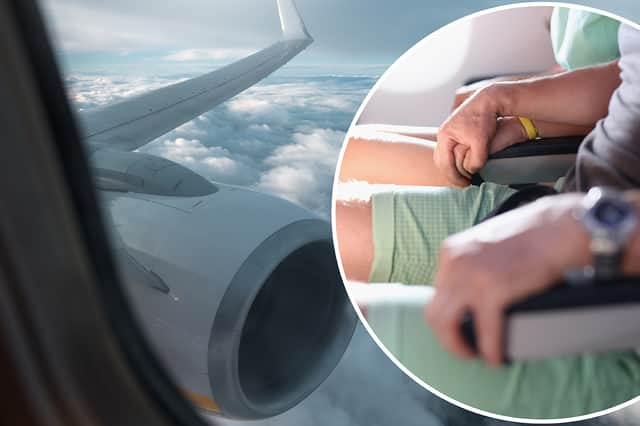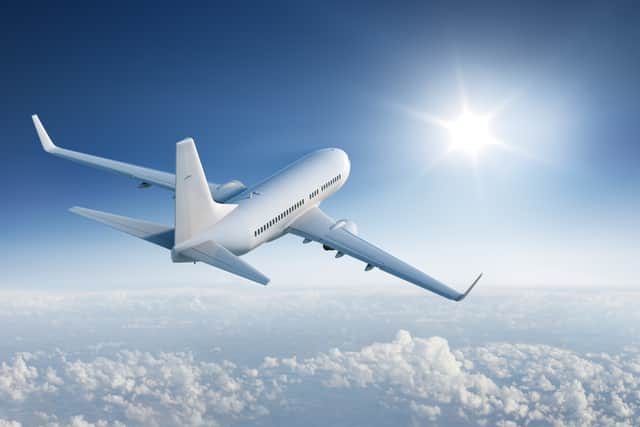What is turbulence? Can it cause a plane to crash, and how is it best to stay calm during a turbulent flight?
This article contains affiliate links. We may earn a small commission on items purchased through this article, but that does not affect our editorial judgement.


I was gripping my armrests with the abject terror of one deeply afraid of flying once. Our plane had entered into an area of turbulence and was yanking up and down like a mechanical bull. The man next to me, it transpired, was a physicist. He calmly, politely drew a diagram of wind currents and how they buffeted a plane's wings, causing us to jerk around. "This is all normal," he said "think of it as an environmental massage."
Such a phrase might sound like cold comfort, but what I discovered from the encounter is the more you know about why turbulence is occurring, the better armed you are to combat any anxiety that comes with it. It is not a reason not to fly. Here's what you need to know.
Advertisement
Hide AdAdvertisement
Hide AdSo, what is turbulence?
Turbulence occurs when the airflow around a plane alters, and the plane buffets around suddenly: lurch forward, slow down, jolt from side to side, or 'drop'.
You likely know the sensation if you've flown. From the inside of a plane, it feels like you're in a box being shaken up and down or side to side. It can be a gentle, bumping murmur, or, in worse cases, thudding up and down.
What causes turbulence?


Turbulence is caused by anything that alters the airflow around a plane - there can be multiple causes for this disruption. Air movement might become chaotic as wind changes speed and lateral position (know as 'wind sheering') or by the level of resistance against the plane changing when it moves through a heavy cloud, if it is stormy.
The plane can also get swayed by wind coming in from different directions at different speeds. Or it might be the airflow is being forced upwards as a plane flies over a mountain - known as an 'updraft'.
Advertisement
Hide AdAdvertisement
Hide AdFlying over the equator also creates turbulence, as winds from the northern hemisphere collides with winds from the south, and shifts in temperature often cause storms.
Other planes flying close to yours can also make things bumpy - the churn from them flying close to your plane causes the airflow to eddy and sheer chaotically.
So there multiple causes, but in essence, planes experiencing 'turbulence' are being shaken by chaotic, fast-flowing, swirling airflow.
It is worse on smaller aircrafts. You may have noticed larger commercial airplanes often fly without encountering turbulence - this is because most flight paths are charted at a high enough altitude to avoid turbulence pockets. Meteorological instruments have also evolved so that pilots can now check in advance for turbulence and adjust their flight path to avoid it. They use something called a CAT forecast, which predicts turbulence - these are between 70-80% accurate. Flight routes are then adjusted to avoid bumpy pockets of air.
Advertisement
Hide AdAdvertisement
Hide AdIronically, more flights in the air and longer flight paths are contributing factors to climate change which, in turn, is causing airflow to become more tumultuous - causing more turbulence pockets. We may not experience as much turbulence when we fly, but there is more of it in the atmosphere than ever.
A study of flight routes between New York and London, between December 2019 and February 2020, found that if flight routes were optimised to be more direct, it would prevented 6.7 million kg of CO2 being released in just that season alone. These direct routes may have been the most turbulent paths though - so the desire to give travellers a smoother experience is having a deleterious impact on the environment.
Is turbulence dangerous? Can it make a plane crash?
Basically, no. More precisely, the instances of it being dangerous or causing a plane to crash or malfunction are negligible. You would need a convergence of multiple elements - an active thunderstorm that caused turbulence, and contributing environmental aggressors such as heavy rainfall, hail, or downdrafts to cause an incident. Thunderstorms are very easy to forecast, though, and flights are cancelled or delayed when they are predicted - so you would simply not fly under the circumstances in which a crash could occur (worth considering if you're feeling frustrated because bad weather has delayed your flight - it's worth it!)
Similarly if a weather emergency occurs mid-flight, your plane would be diverted to reduce any risk. Basically, turbulence is unpleasant, but you it will not cause your plane to crash: the safe-proofing for commercial flights is such you simply can't fly when it is too rough out.
Advertisement
Hide AdAdvertisement
Hide AdHow to stay calm when your flight starts to get bumpy
Personally, my preferred means of staying calm on a flight is to keep an eye on the flight attendants. They will, invariably, stay calm, cool, and collected, even if the plane is bobbling around like Skittles in a washing machine. They know that it's a natural occurrence, and their collected demeanour offers reassurance nothing strange is happening.
Diversion techniques are obviously a good idea - podcasts, audiobooks, TV if you have the means. Breathing exercises are useful when things are especially hairy - apps like Calm are good for guided meditation if you don't know how to already.
Comment Guidelines
National World encourages reader discussion on our stories. User feedback, insights and back-and-forth exchanges add a rich layer of context to reporting. Please review our Community Guidelines before commenting.
